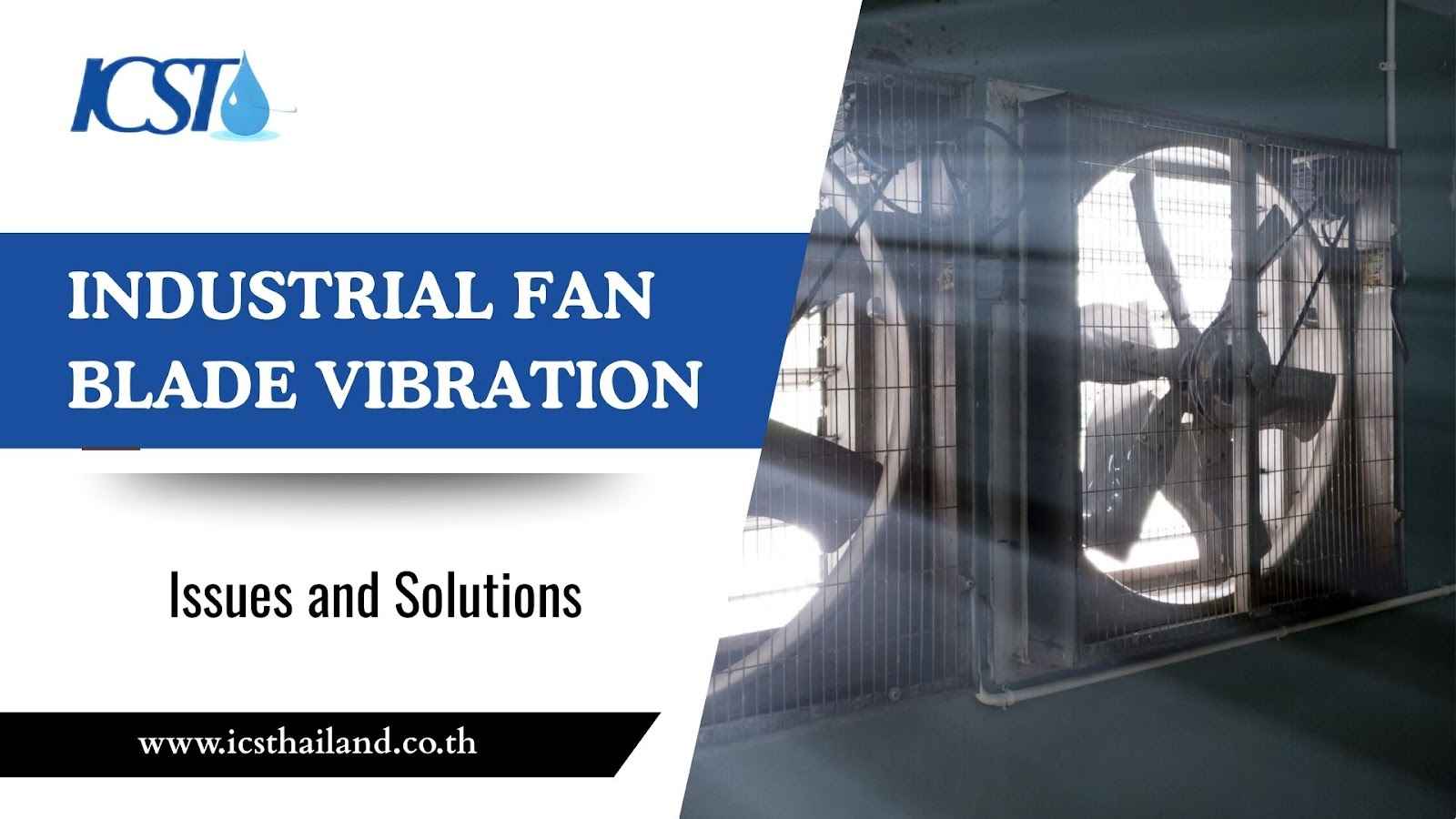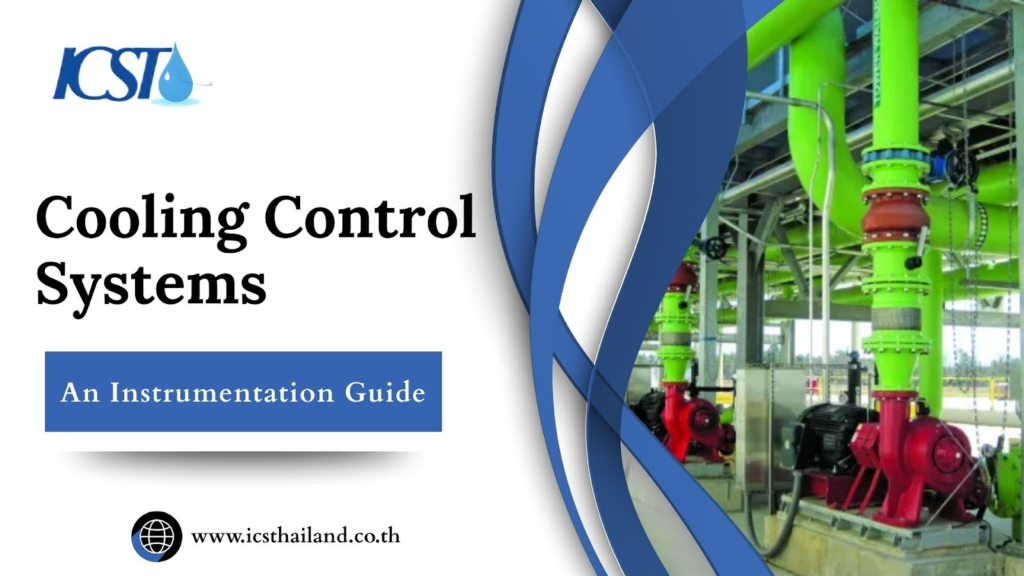Industrial fans are the workhorses of cooling towers, critical for rejecting heat and maintaining operational efficiency. When they run smoothly, the entire system benefits. However, a common and often underestimated problem can disrupt this harmony: fan blade vibration.
Vibration is more than just a minor annoyance; it’s a critical symptom that can signal deeper, more destructive problems within your cooling system.
This guide provides a comprehensive overview of industrial fan blade vibration. We will explore its causes, identify its warning signs, and detail effective solutions and preventive measures to ensure your cooling towers operate at peak performance.
Table of Contents
ToggleWhy Industrial Fan Vibration Demands Immediate Attention
Unchecked vibration can have severe consequences for your operations, affecting everything from energy bills to workplace safety.
- Reduced Efficiency & Increased Energy Consumption: Vibration is wasted energy. It disrupts the smooth, laminar airflow that fans are designed to produce, forcing the motor to work harder and consume more power to achieve the same cooling effect.
- Accelerated Wear & Component Damage: The constant shaking places immense stress on critical components. This can lead to premature failure of bearings, motors, gearboxes, and the fan’s support structure, turning minor issues into major repairs.
- Increased Maintenance Costs & Downtime: Unexpected failures caused by vibration result in emergency repairs, which are far more costly than planned maintenance.
- Safety Hazards: In extreme cases, severe vibration can cause a catastrophic fan blade failure. Blades can be ejected from the fan stack, posing a serious risk to personnel and surrounding equipment.
- Noise Pollution: Excessive vibration generates loud, unpleasant noise, contributing to a stressful and potentially unsafe working environment for your employees.
Understanding the Roots of Vibration: Common Causes
To effectively solve an industrial fan blade vibration problem, you must first identify its source. Most vibration issues in industrial fans can be traced back to a few common culprits.
Unbalance
- Buildup: Dirt, ice, dust, or mineral scale can accumulate unevenly on fan blades.
- Erosion/Corrosion: Blades can wear down over time, losing material and becoming unbalanced.
- Manufacturing Defects: Imperfections from the manufacturing process can result in an imbalanced blade.
- Missing Weights: Balance weights installed at the factory can sometimes fall off.
This uneven weight creates powerful centrifugal forces as the fan rotates, causing the entire assembly to shake.
Misalignment
Misalignment happens when rotating components like the motor, gearbox, driveshaft, and fan shaft are not perfectly aligned. How does this occur?
- Improper Installation: Components not aligned correctly during initial setup or after maintenance.
- Foundation Settling: The base supporting the equipment can shift or settle over time.
- Thermal Expansion: Changes in temperature cause machinery components to expand when heated and contract when cooled, which can disrupt their alignment.
Mechanical Looseness
Often, vibration is simply caused by parts that are no longer secure. What should you look for?
- Loose Bolts: Mounting bolts on the motor, gearbox, or fan assembly can work themselves loose.
- Worn Keyways: The small keys that lock gears and pulleys to shafts can wear out, creating play.
- Loose Bearings: Bearings that are not fitted tightly in their housings can shift and cause vibration.
These loose connections allow components to move excessively, which can either create new vibrations or amplify existing ones.
Bearing Wear
The bearings that support the fan motor and gearbox are essential for smooth rotation. When do they start to fail?
- Inadequate Lubrication: Using the wrong type or an insufficient amount of lubrication is one of the main reasons bearings fail.
- Contamination: Dirt, dust, or moisture can get into bearings and cause damage.
- Excessive Load: Unbalance and misalignment put extra strain on bearings, causing them to wear out faster.
Deteriorating bearings create friction, heat, and noise, all of which contribute to system vibration.
Blade Damage & Defects
Any physical damage to a fan blade can disrupt its performance and cause vibration. What kind of damage is common?
- Impact Damage: Debris getting pulled into the fan can cause cracks, chips, or bends in the blades.
- Corrosion: Exposure to harsh chemicals or environments can eat away at the blade material.
- Fatigue: Over time, the stress of rotation can lead to cracks and material failure.
Damaged blades are almost always unbalanced, and their compromised shape also reduces airflow efficiency.
Structural & Resonance Problems: Systemic Instability
In some cases, the vibration originates from the cooling tower structure itself. What are the signs of structural issues?
- Weak Supports: A fan deck or support structure that is weak, flexible, or corroded cannot adequately absorb normal operational forces.
- Resonance: If the fan’s operating speed matches the natural vibrational frequency of the support structure, even a tiny imbalance can be amplified into a violent, destructive vibration.
Resonance is particularly dangerous because it can quickly lead to major structural damage or complete failure.
Recognizing the Warning Signs
How can you tell if your industrial fan has a vibration problem? Be on the lookout for these clear warning signs that signal trouble.
- Visible Shaking/Wobbling: The fan stack, motor, or even the entire tower structure may be visibly shaking.
- Excessive Noise: Listen for unusual sounds like grinding, clattering, humming, or a loud roaring that is out of the ordinary.
- Overheating: Components like motor bearings or the gearbox may feel unusually hot to the touch or show high readings on a thermal gun.
- Reduced Airflow: A noticeable drop in air velocity from the fan indicates it’s not performing efficiently, which can be a symptom of vibration.
- Increased Energy Consumption: If the fan’s motor is suddenly drawing more amps without a change in load, it could be fighting against vibration.
- Premature Component Failure: If bearings, belts, or couplings are failing more frequently than expected, chronic vibration is a likely culprit.
- Loose Fasteners: Finding loose bolts or fasteners around the fan assembly is a direct sign that something is shaking them loose.
Precision Diagnostics: Tools and Techniques
After identifying a possible vibration issue, the next step is to determine its exact cause. Modern diagnostic tools and techniques allow for a systematic and precise approach.
Visual Inspection & Basic Checks
Check for obvious signs of trouble like dirt buildup on blades, loose bolts, and any visible damage. Listen for unusual sounds and verify that operating parameters like motor amps and temperatures are within the normal range.
Vibration Analysis (Sensors & FFT)
For a more scientific diagnosis, technicians use specialized sensors called accelerometers. These devices are attached to key points on the fan assembly to measure the intensity and frequency of vibrations.
This data is then processed using Fast Fourier Transform (FFT) analysis, which creates a unique vibration signature that can pinpoint the root cause, whether it’s unbalance, misalignment, bearing faults, or another issue.
Laser Alignment
Laser systems are used to ensure the motor, gearbox, and fan shafts are perfectly aligned, eliminating the destructive forces caused by misalignment and significantly extending the life of your components.
Thermal Imaging
An infrared camera serves as an effective tool for diagnostics. By detecting abnormal heat patterns, thermal imaging can identify overheating bearings, electrical problems, or areas of excessive friction, often before they become severe enough to cause significant vibration.
Effective Solutions for Common Vibration Issues
With a precise diagnosis in hand, you can implement the right solution. Here are the most effective actions for tackling common vibration causes.
Addressing Unbalance
The fix for the unbalance is straightforward. Start by cleaning the fan blades thoroughly to get rid of dirt, ice, or any buildup. If vibration persists, perform on-site dynamic balancing to correct any remaining uneven weight distribution.
Correcting Misalignment
Misalignment requires precision. Use professional laser alignment tools to ensure all shafts and couplings in the drive train are perfectly aligned according to manufacturer specifications.
Resolving Mechanical Looseness
This solution requires a systematic approach. Inspect and tighten all mounting bolts, foundation bolts, and component fasteners to the correct torque values. While you’re at it, check for worn keyways and replace them if necessary.
Managing Bearing Issues
Proper bearing care is essential. Strictly follow the recommended lubrication schedules with the correct type of lubricant. If a bearing is already worn, replace it promptly and ensure the new bearing is installed correctly to avoid premature failure.
Repairing or Replacing Damaged Blades
Small nicks might be repairable, but any blade that is bent, cracked, or severely eroded must be replaced. It’s often best to replace the entire set to ensure perfect balance and aerodynamic integrity.
Mitigating Aerodynamic and Structural Problems
For airflow issues, start by clearing any obstructions from the fan’s inlet and outlet. You may also need to adjust the blade pitch for optimal performance. If resonance is detected, the solution is more complex and may involve reinforcing structural components or adding vibration dampeners.
Preventive Measures: Maintaining Vibration-Free Operation
The best way to address industrial fan blade vibration is to prevent it from happening in the first place. A proactive maintenance strategy is your best defense against unexpected failures and costly downtime.
Regular Maintenance & Lubrication
A disciplined maintenance routine is fundamental. What should this include?
- Establish and follow a strict schedule for cleaning fan blades to prevent buildup.
- Adhere to a lubrication schedule for all bearings, using the correct type and amount of grease.
Continuous Monitoring with IoT
For critical systems, consider upgrading your monitoring capabilities. How can technology help?
- Deploy modern IoT vibration sensors for real-time, 24/7 condition monitoring.
- These sensors provide early warnings of developing issues, allowing you to transition from reactive repairs to predictive maintenance, addressing problems before they cause a failure.
Proper Installation & Component Quality
Long-term reliability starts with a solid foundation. What are the key principles?
- Ensure that all new and replacement parts are installed with precision and according to manufacturer specifications.
- Invest in high-quality, durable fan blades, bearings, and drive components from reputable suppliers.
- Verify the stability and integrity of the foundation before installing or replacing heavy equipment.
Conclusion
Industrial Fan blade vibration is a critical indicator of your cooling tower’s health. It has significant implications for operational efficiency, maintenance costs, and workplace safety. Ignoring the warning signs is a risk that can lead to expensive and disruptive failures.
Proactive diagnosis using modern tools and the timely implementation of effective solutions are key to preventing these outcomes. By investing in regular maintenance and professional analysis, you can ensure an extended equipment lifespan, stable operations, and a safer environment.
Don’t let vibrations disrupt your cooling tower’s efficiency. Industrial Cooling Solutions Thailand (ICST) offers expert vibration analysis, precise balancing, alignment, and tailored maintenance programs to keep your industrial fans running at peak performance.
Ready to maximize reliability and minimize downtime? Contact us today and let our experts take care of the rest!
Frequently Asked Questions
What are the main causes of fan vibration?
The most common cause is unbalance from uneven weight distribution on the blades. Other issues include misalignment, mechanical looseness, and worn bearings.
What are the signs of fan vibration?
Look for visible shaking, unusual noises, overheating components, and a noticeable drop in airflow. You may also find loose fasteners or experience premature component failure.
How is vibration corrected?
Correction depends on the cause. Unbalance is fixed with dynamic balancing, while misalignment requires professional laser alignment. Loose parts are simply tightened.
What tools are used to diagnose fan vibration?
Professional technicians use specialized vibration analysis tools, such as accelerometers, to measure the frequency and intensity of shaking. This data is then analyzed using Fast Fourier Transform (FFT) to pinpoint the exact root cause of the issue.
What are the best ways to prevent fan blade vibration?
A proactive maintenance strategy is key. This includes regularly cleaning fan blades to prevent dirt buildup, inspecting all components for wear or looseness, and adhering to a strict lubrication schedule for bearings.








